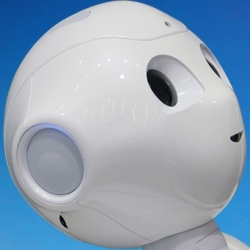
One of the biggest beneficiaries of AI research has been language translation. Fast, accurate communication in multiple languages can be expensive. Machine language software uses AI concepts to improve text-based translations in ways undreamed of a few years ago.
Whether the technology is employed for educational translation purposes or patent translation, these latest advancements are bringing machine translations to a whole new level for every field.
Narrow AI
Sometimes called weak AI, narrow AI works based on a straightforward, yet sophisticated, computer programming. A series of rules are established in the code, and the computer executes them.
The AI, in this case, performs tasks that a human can do, only faster and in some ways smarter. Games like solitaire and chess fall in this category, as well as more complicated tasks like Facebook’s face recognition program.
Machine Learning
Machine learning takes narrow AI a step up forward by recreating a form of learning. Large amounts of data are fed into an algorithm that can sort the information into recognizable patterns and trends. The program starts out rules-based, but then moves beyond that to make observations or predictions about the given data.
Machine learning works to answer specific questions based on the data. Everything from predicting temperature trends to Google’s Alexa works using machine learning software.
Deep Learning
The newest mode of AI that most replicated human learning and functionality is deep learning. Deep learning takes machine learning further by employing similar techniques–sorting and categorizing data to determine a conclusion–but also has the ability to use its process to answer new problems based on its own solutions of previous situations.
The algorithms used in deep learning AI are structured much more like neural networks. In this manner, they are an analog to how the human brain processes information. This is instead of moving step-by-step through a series of program rules, like machine learning. In other words, deep learning AI learns and grows from experience.
Google’s DeepMind is a great example of deep learning AI. By using old video games, researchers were able to replicate the human thought process of planning and strategizing how to play. The deep learning AI learns from its own mistakes and becomes a much more successful player each time it plays a game.
AIs and Machine Language Translation
One of the many exciting possibilities that AI can offer is sophisticated interactions between humans and computers. For businesses operating in global markets, communicating across language barriers presents unique challenges in context and translation. Machine language translation software can help, but it remains in the beginning stages of development.
Take, for example, the words “farmer,” “grower,” and “planter.” A human understands the similarity between these words, but also knows they have subtle differences. In everyday language, humans select the correct word intuitively. A machine language translation software has a much harder time picking the correct word because it does not necessarily understand the concept of context.
That problem might be falling away. Google has been researching machine language translation for years. As a result, Google Translate has helped many businesses translate their creative content from one language to another.
Google Translate uses a rules-based machine learning approach. Today, however, Google has introduced the Google Neural Machine Translation (GNMT) software that works on the neural network concept.
As an example of the breakthroughs AI can provide, the GNMT has figured out how to move from one language to another by creating its own algorithms. The algorithms are creating translations on their own by understanding not only words, but also concepts in ways that the original Google Translate could never replicate.
In a few short years, machine language translation software might be as accurate and successful as human translation, while lowering the cost. Businesses involved in global markets should keep tabs on translation software development in order to position their products and services on the cutting-edge of technology and get ahead of the competition.
